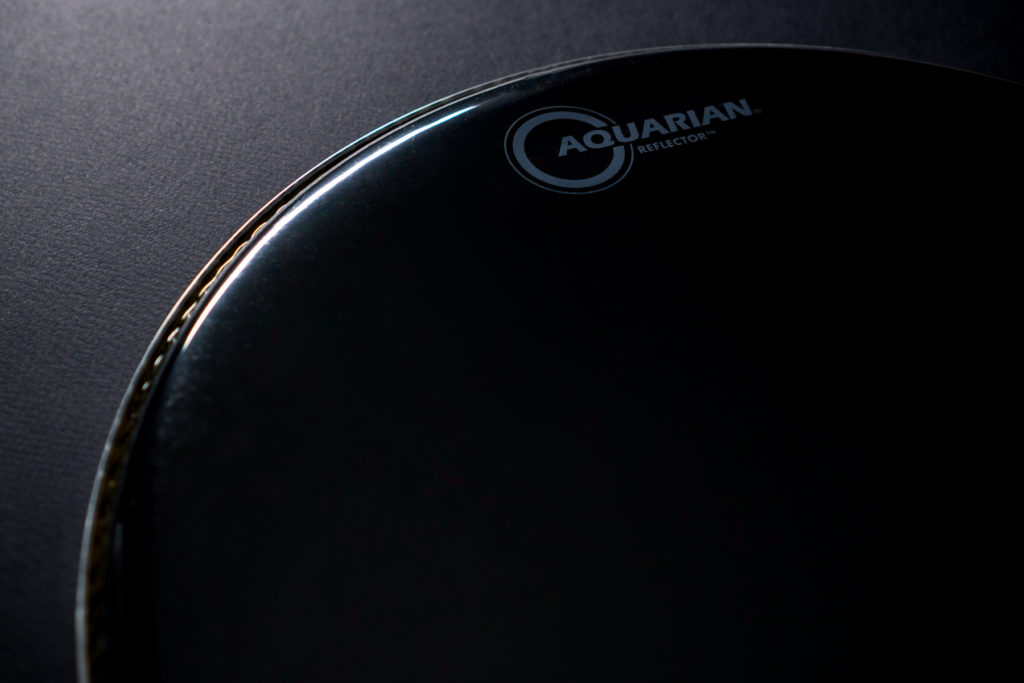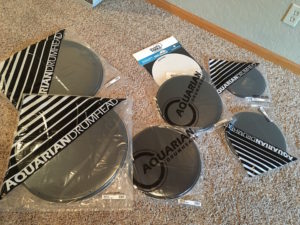 By JJ Jones
By JJ Jones
A new snare head of mine once lost most of its coating only 45 minutes into a recording session— I vowed to find another brand. A drum shop employee suggested Aquarian drumheads, and the rest was history. I used their coated Studio-X series religiously for years because the coating never comes off (it gets smooth after awhile, but doesn’t come off the head). More recently I switched to their clear Performance IIs, wanting a thuddier, more ‘70s sound with less overtones. So, when I happened across a video last month of Eric Moore playing Aquarian’s new Reflector Series, I knew I had to give them a try, thinking they might be the next evolution in my sound. I wasn’t disappointed: with the Reflectors, my drums have never sounded better.
Aquarian sent us a set of Reflectors: 10” 12” 14”, 14”, and 20”, along with a 20” Reflector Super Kick II, bass drum head. I tuned them using a method I learned from a recent online recording class by Matt Halpern and producer Adam “Nolly” Getgood, self-professed drum tone fanatic. The Reflector heads, combined with Nolly’s tuning method and my Gretsch Renown Walnut drums (rich, low-end projection, with 4 plies of walnut sandwiching 2 plies of maple), has been nothing short of awesome. For the first time ever, I’m using no dampening on my toms save for one Aquarian t-TAB tone modifier on the bottom head of the floor tom (more on t-TABs below). So, I’m getting the full sing of the drums but with virtually no unwanted overtones.
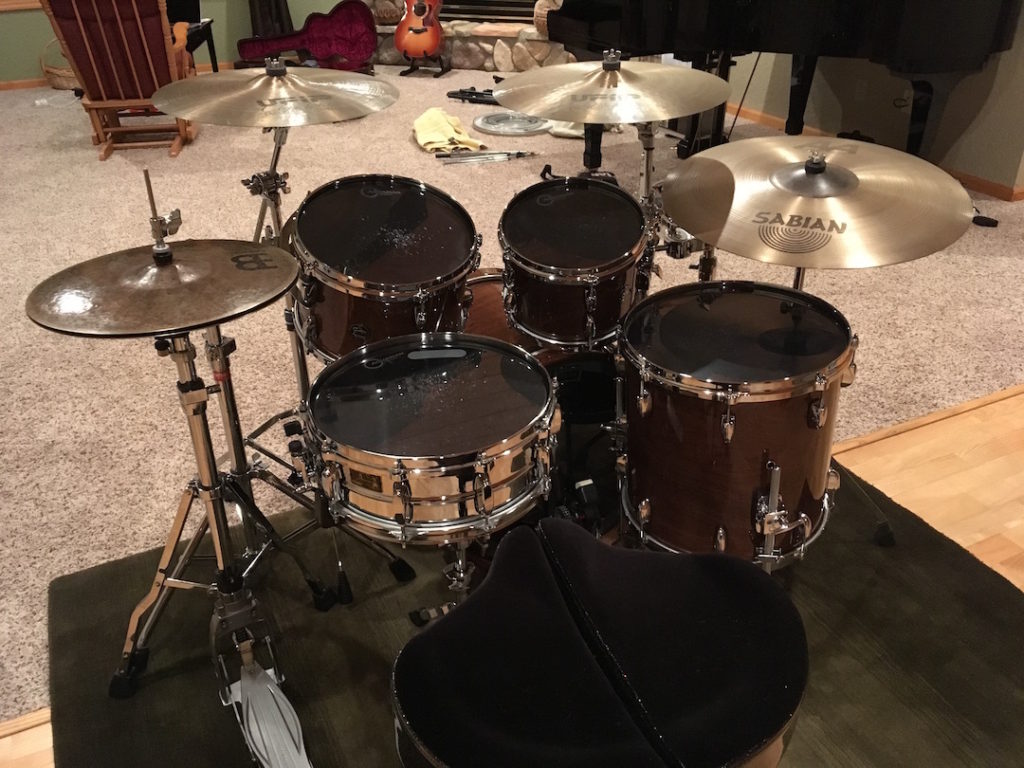

Reflector heads are made using a 2-ply hybrid construction that consists of a denser black 10mil bottom layer, and a clear 7mil top. The result is a head Aquarian touts as, “Warm and musical at low volumes, bright and more articulate when played hard.”
If I had any prior concern with the Reflectors it’s that they’d be so thick that, unless they were hit hard, they’d be almost dead sounding, like, no overtones at all if hit lightly. I play with a lot of singer/songwriters and acoustic artists, which usually means low-volume and using Lightning-Rods (rute sticks) along with various kinds of brushes, so, it’s important I get a full musical tone from all the drums, even with lighter playing. The Reflectors passed with flying colors. I get a nice phat crack on my 5” Stewart Copeland signature snare, with only one t-TAB to reduce the highest overtones. My toms sound downright amazing: warm and musical, with a clear fundamental tone. And the kick is awesome, even with no port hole in the resonant head or dampening on the inside (unheard of!), it’s full & deep, with a nice attack and punch. I’m looking forward to porting the front head for even more attack.
If all this wasn’t enough, the Reflectors black mirrored appearance, due to the hybrid 2-layer construction diffracting and reflecting light, is SUPER cool. I’ve always loved the look of black heads, especially on natural wood drums, and the Reflectors are the best I’ve ever seen — they’re black AND reflective. Hot. 🔥
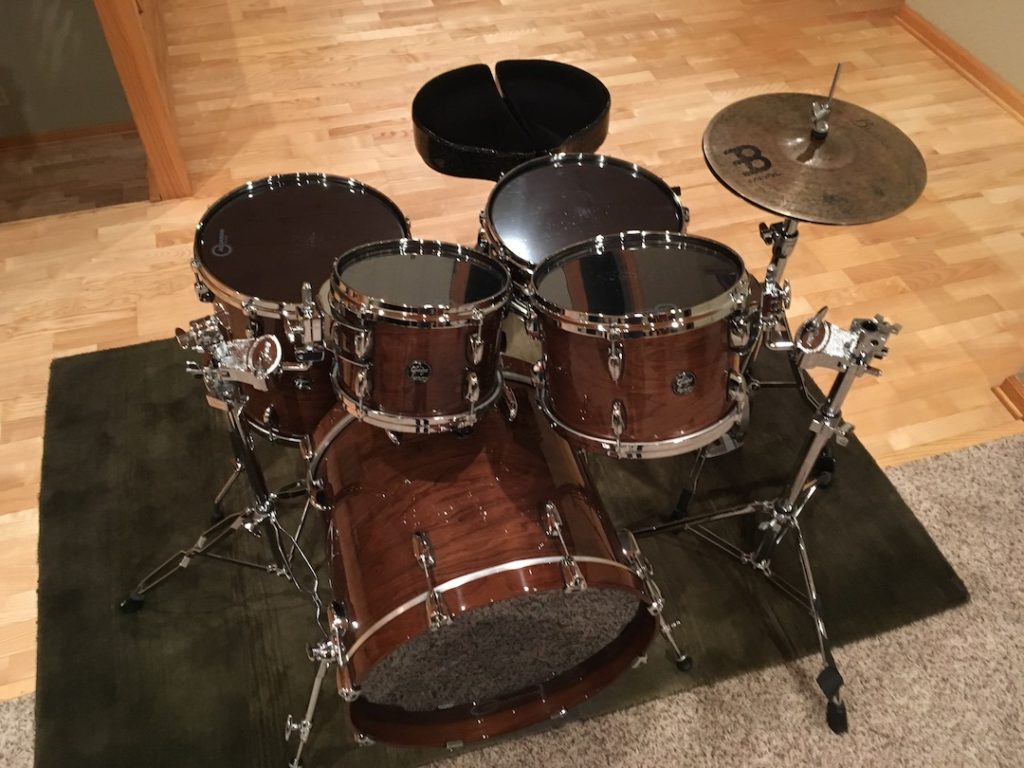
In short, these heads are the shiznit. I expected to like them, I didn’t expect to LOVE them. Thank you, Aquarian, for providing the next stage in my drum-sound evolution!
A jaw-dropping performance by Eric Moore on a drum cover of Missy Elliot’s “Get UR Freak On” using Aquarian’s Reflector Series heads:
Click here to learn more about Aquarians’ Reflector Series heads
Aquarian’s “Drumkit TOOLS”
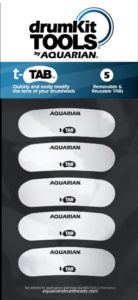
Aquarian also sent us several sets of their satin black Drumkit TOOLS, including their proprietary t-TABs, Dura-DOTs, and Kick-PATCH. Combining various 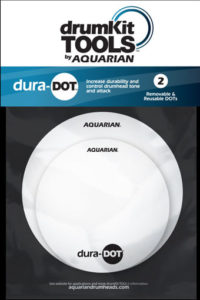 numbers and configurations of each on my snare, I compared the t-TABS, which Aquarian describes as “tone modifiers”, to Drumdots, which are very similar to Moongels. The Drumdot provided more dampening and muted the overtones to a greater degree, and I preferred that sound when the drum was played by itself. But as soon as I recorded the snare and listened back with other tracks, I preferred the t-TAB. By allowing slightly more overtones to come through, it sat in the music better. The Drumdot made the snare sound too dead with everything else going on.
numbers and configurations of each on my snare, I compared the t-TABS, which Aquarian describes as “tone modifiers”, to Drumdots, which are very similar to Moongels. The Drumdot provided more dampening and muted the overtones to a greater degree, and I preferred that sound when the drum was played by itself. But as soon as I recorded the snare and listened back with other tracks, I preferred the t-TAB. By allowing slightly more overtones to come through, it sat in the music better. The Drumdot made the snare sound too dead with everything else going on.
As I said above in the Reflectors review, I eventually settled on one t-TAB on the snare batter and one on the bottom head of the floor tom. This is partly due to how great the Reflectors worked on my drums to provide the sound I’m going for, but, if one is using single-ply heads with a lot of overtones, say, you can get greater dampening by using multiple t-TABS. (And t-TABS can be played on, unlike gel dampeners).
t-TABs have an adhesive backing that allows you to pull them off and on multiple times, sticking them where you need them most. I have no idea how long the adhesive lasts (Moongels tend to gather dust and peel off over time), but it worked great for the session I used it in and I was moving them all around to various locations on the drums and heads.
I didn’t end up using Aquarian’s Dura-DOT on my snare, but I did cut one up to use as a very small kick drum patch, to protect the head right where the batter hits it. It sounded great: not as muted as the Evans textured nylon kick patches, and not as slappy as Remo’s Falem Slam kevlar pad either. Below is a video of Eric Moore using a Dura-DOT on his snare to get a really wet, flat effect. A cool thing to have in your drum bag for instantly changing your snare sound without re-tuning!
Click here for more info on Aquarian’s DrumTOOLS
JJ Jones is an internationally touring, Berklee-trained drummer and educator. She has played with folk-pop darlings Girlyman, singer/songwriter Lucy Wainwright Roche, comedian Margaret Cho, LA’s riot-pop band WASI, and Egyptian revolutionary Ramy Essam, among many others. She is the founder of EmpowerDrumming.com.


